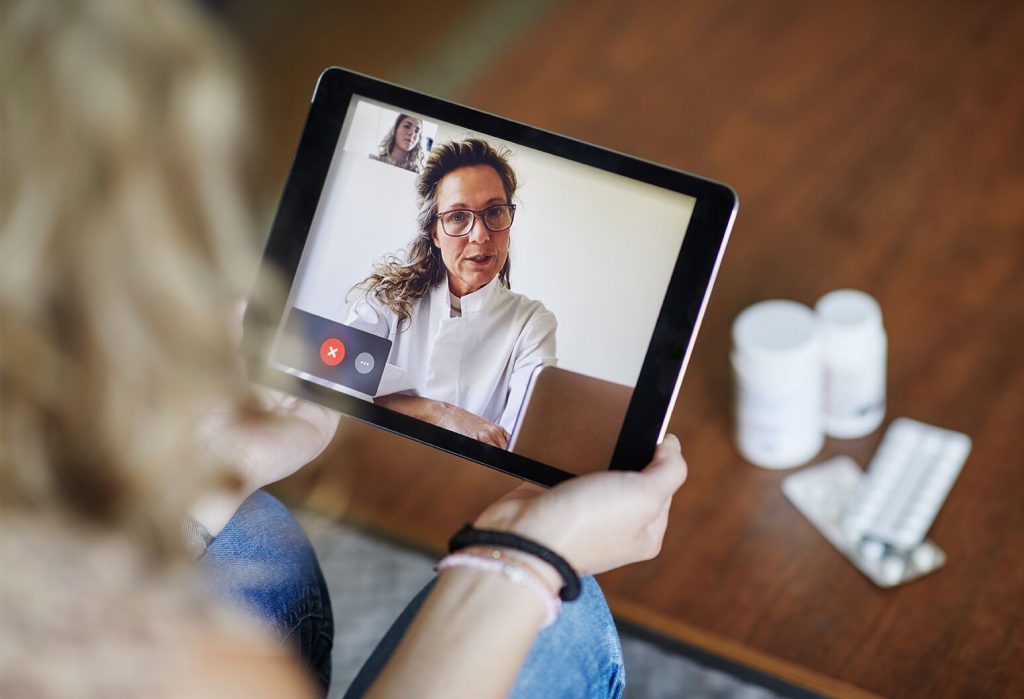Telehealth has revolutionized healthcare delivery, offering patients convenient access to medical professionals from the comfort of their homes. Whether you’re managing chronic conditions, seeking mental health support, or addressing acute concerns, virtual visits can be as effective as in-person consultations—provided you’re well-prepared. This guide offers practical steps to ensure your telehealth experience is seamless and productive.

Understanding Telehealth
Telehealth encompasses a range of healthcare services delivered remotely via technology. It includes video consultations, phone calls, and secure messaging with healthcare providers. This mode of care has become increasingly popular, especially in the wake of the COVID-19 pandemic, due to its convenience and accessibility.
Preparing for Your Telehealth Appointment
1. Understand the Technology
Before your appointment, familiarize yourself with the telehealth platform your provider uses. Ensure it’s secure and HIPAA-compliant. If you’re uncertain about the technology, don’t hesitate to contact your provider’s office for guidance. They can walk you through the setup process and help troubleshoot any issues.
2. Gather Necessary Health Information
Just like an in-person visit, having your health information ready is crucial. Prepare the following:
- Vital Signs: If possible, check and note your temperature, pulse, weight, and blood pressure.
- Medical History: Be ready to discuss your medical history, current medications, and any recent health changes.
- Symptoms: Make a list of symptoms you’re experiencing, including their duration and severity.
- Questions: Write down any questions or concerns you want to address during the appointment.
3. Test Your Equipment
Ensure your device (computer, tablet, or smartphone) is fully charged and functioning correctly. Test your internet connection, camera, microphone, and speakers. Conducting a trial run can help identify and resolve technical issues beforehand.
4. Choose an Appropriate Setting
Select a quiet, private, and well-lit space for your appointment. Ensure the background is neutral and free from distractions. Position your camera at eye level to maintain good eye contact with your provider.
5. Have a Support Person if Needed
If you require assistance during your appointment, consider having a trusted individual present. They can help with technology, take notes, or provide emotional support.
During the Appointment
- Be Punctual: Log in a few minutes early to account for any last-minute technical issues.
- Communicate Clearly: Speak slowly and clearly. If you don’t understand something, ask for clarification.
- Take Notes: Jot down important information, such as treatment plans, medication instructions, and follow-up steps.
After the Appointment
- Review the Summary: Your provider may send a summary of the visit. Review it carefully and reach out if you have questions.
- Schedule Follow-Ups: If necessary, schedule any recommended follow-up appointments or tests.
- Provide Feedback: Share your experience with your provider’s office to help improve future telehealth services.
Frequently Asked Questions
What should I do if I experience technical difficulties during my telehealth appointment?
If you encounter technical issues, contact your provider’s office immediately. They can offer assistance or reschedule your appointment if necessary.
Can I have someone with me during my telehealth appointment?
Yes, having a support person can be beneficial, especially if you need assistance with technology or have complex health concerns.
Is my personal health information secure during a telehealth appointment?
Reputable telehealth platforms are designed to be secure and comply with HIPAA regulations to protect your privacy.
What types of appointments are suitable for telehealth?
Telehealth is suitable for various appointments, including routine check-ups, mental health counseling, medication management, and follow-up visits.
How can I ensure I get the most out of my telehealth appointment?
Preparation is key. Familiarize yourself with the technology, gather necessary health information, choose an appropriate setting, and communicate openly with your provider.




